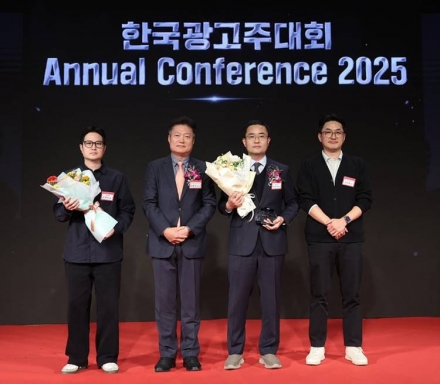지난 4일 영국 가디언지 일요일판인 영국 옵져버 커버 특별편에 ‘한국에 관한 모든 것(원제: K-everything: the rise and rise of Korean culture)’이라는 제목의 한류 탐사 기사가 실렸다. 영국의 팀 애덤스(Tim Adams) 기자가 전 세계적으로 열풍을 일으키고 있는 한국의 음악, 영화, 패션, 음식 등을 직접 체험하기 위해 우리나라를 찾았다.
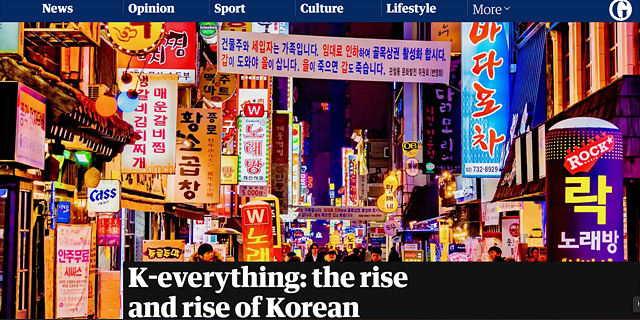
팀 애덤스 기자는 한국 대중문화가 세계적으로 인기를 누리는 비결을 IMF 이후 창의적인 산업과 인재 육성을 위해 수십억 달러의 민·관 투자 펀드를 문화 콘텐츠에 투자한 결과라고 판단했다.
문화수출이라는 새 패러다임으로 바라본 K팝, 디지털 발달을 기반으로 한 e스포츠 산업, 세계 영화인들의 사랑을 받은 영화 산업에 대해서도 자세히 분석했다. 한국은 좋은 국가 지수(Good Country Index) 기준 전세계 문화적 영향력 부문에서 6위라고 덧붙였다.
그동안 옵져버에서 한국 문화에 대해 보도를 한 적이 있었으나 이번과 같이 기자가 직접 방문 취재하고 4개 지면을 할애한 것은 이례적이다.
한편 문화체육관광부는 지난해부터 외신들이 한국의 문화콘텐츠를 성공적인 문화 영향력으로 평가해 심층분석한 기사를 쏟아내고 있어 무척 고무된 분위기다. 대부분의 외신은 공통적으로 한류의 성공을 정부의 과감한 투자덕이라고 보고 있기 때문이다.
■(박스)한류를 정부의 투자덕으로 다룬 외신들
영국의 유력 일간지 더 타임스
'한류! 한국 문화는 어떻게 세계를 정복했는가?'라는 제목의 기사에서 '우리는 모두 K팬이다. 하지만 '오징어 게임'같은 수출 상품의 인기는 우연이 아니다. 수십 년에 걸친 야심찬 정부 계획의 산물이다'라고 했다.
프랑스의 BFMTV(뉴스 전문 채널)
'오징어 게임', '기생충', '나 혼자만 레벨업(웹툰)'…한국 문화는 어떻게 세계를 정복했나'라는 기사에서, '한류의 전례 없는 성공은 우연이 아니다. 이는 1990년대 한국이 시작한 정치, 무역 전략의 결과'라고 썼다.
미국의 잡지 '포린 어페어스'
'한국 대중문화 진흥을 위해 한국 정부는 전자, 조선, 자동차, 등 다른 수출산업에도 사용했던 같은 민관 협력 정책을 사용했다. 홍보 회사, 기술 기업, 그리고 다른 민간 기업들과 함께 문화관광부는 한국 TV 드라마와 영화, 가요의 해외 시장 진출을 위한 세밀한 사업 계획을 짰고, 기업가와 예술가들에게 자금을 지원했다'고 쓰고 있다.
복스(Vox)
K팝의 놀랍도록 정치적인 역사'라는 기사에서 IMF 외환위기를 겪은 한국이 문화라는 새로운 시장 개척에 나선 것이 한류 K팝의 시작이었다고 했다. 또 한국 정부가 거대 기업들에게 한국 영화와 비디오 게임, 음악을 발전시킬 수 있도록 각종 자금 지원과 혜택을 제공했다고 했다.
이하는 팀 애덤스 기자가 작성해 옵져버에 게재한 기사 한글 번역본과 영어 원문이다.
◆옵져버 (The Observer) ‘K-’의 모든 것 번역본 전문
음악부터 영화, 기술, 음악까지. 전 세계가 한국의 모든 것과 사랑에 빠졌다. 런던에서 큰 전시를 앞두고 팀 애덤스(Tim Adams)가 진정한 한류(Korean wave)를 찾기 위해 서울을 방문했다.
지난주 나는 한국의 수도인 서울의 한 댄스 스튜디오(12개 중 하나)에 있었다. 이 스튜디오는 서울에서도 한강 북쪽에 있는 파격적인 새 오피스 건물에 있는 곳으로, SM엔터테인먼트로 잘 알려진 곳의 건물이었다. SM엔터테인먼트는 21세기 가장 강력한 문화 운동 중 하나인 한국의 대중문화에서 기인한 현상, 즉 K-팝을 만들어냈다는 강력한 주장을 펼치는 곳이다.
각 세대는 고유한 이미지로 히트 공장을 만든다. 'SM 컬처 유니버스(SM Culture Universe)'는 본래 가수이자 DJ로서 잠시 활동했다가 1980년대 미국에서 컴퓨터 공학을 공부한 이수만 회장의 비전이었다. 그는 '한국 음악의 세계화'라는 꿈을 품고 한국으로 돌아왔다.
이 댄스 스튜디오에서 이수만 씨의 조카이자 SM의 대표이사인 이성수(Chris Lee) 씨가 이러한 꿈이 어떻게 실현되었는지, 그 여정을 이야기해주었다. K-팝 아이돌의 아시아 차트 점령부터 시작해 최근 엄청난 성공을 거머쥔 K팝 그룹 방탄소년단(지난 2년간 세계에서 가장 많은 판매량을 기록한 밴드로, 경쟁사인 하이브 엔터테인먼트 소속)에 이르며 이들이 전 세계 구석구석까지 영향력을 넓히고 있었다. SM은 매년 11세 이상의 보이그룹과 걸그룹 멤버를 장기계약으로 영입하고, 이 건물이 이들의 실제적인 집이 되도록 한다. 이곳은 내부에서 모든 것을 해결할 수 있는 공간이다. 모든 방은 기자회견, 팬 채팅, 라이브 스트리밍을 할 수 있는 공간이며, 한 층은 '아티스트의 집'으로서 '아이돌'이 휴식을 취하거나 요리를 할 수도 있다(이 모습은 팬들이 밖에서 확인하고 환호할 수 있다). 또 다른 층은 '송 캠프'가 있어 전 세계 작곡가들이 차례로 찾아와 세계적으로 유행할 음악을 만들어낸다.
이성수 이사는 이러한 작업에 대해 말하며 "우리가 (새로운 인재들에게) 말하는 것 중 하나는 이들이 우리나라를 대표한다는 것이다. 올림픽에 참가하는 이들은 훈련을 받아야 할 것인데, 우리는 아티스트도 이와 다르지 않다고 생각한다. 만약 세계 최고가 되고 싶다면, 많은 노력을 들여야 한다. 이들은 미디어 트레이닝을 받는다. 이들은 다른 많은 청중과 의사소통을 할 수 있도록 언어를 배운다. 우리는 이들이 훌륭한 인성을 함양할 수 있도록 교육한다"라고 말했다.
이 시스템을 통해 가장 성공적으로 생산된 상품 중 하나는 우리의 대화에 참여한 태용이다. 태용은 아이돌 그룹 NCT 127('Neo-Cultural Technology(신문화기술)'와 서울의 경도인 127을 합친 말)의 리더이다. NCT 127이 선보인 가장 최근 곡인 'Sticker'는 미국 빌보드 차트에서 3위에 오르기도 했다. 모든 걸그룹, 보이그룹과 마찬가지로, 태용은 멋진 골격과 완벽한 피부를 가지고 있어 아바타와 같고 중성적인 매력을 가지고 있었다. 태용은 자신이 외모 덕분에 약 10년 전 SM엔터테인먼트의 눈에 띄었다고 설명했다. 이 이사는 "태용은 당시 춤을 잘 추지 못했다. 랩은 전혀 하지 못했다. 지금 그는 최고의 댄서이고, 훌륭한 래퍼이다. 그는 이 건물의 연습실에서 살았다"라고 말했다.
27세인 태용은 17살처럼 보인다. NCT 127의 리더로서 그의 어깨는 무겁다. K-팝 그룹은 접근성이 중요하다. 태용은 NCT 127 팬 커뮤니티와 거의 24시간 접촉하고 있는데, 이 중 일부는 팬들이 가상으로 아이돌을 만날 수 있는, 일종의 게이머들이 꿈꾸는 환경인 '디지털 메타버스'를 통해 이루어진다(SM은 2년 전 새로운 걸 그룹 에스파를 데뷔시켰다. 이들은 실제 인물 4명과 아바타 멤버 4명으로 이루어져 있으며, 각각은 배경 이야기와 가상의 삶이 이어지고 있다). 유비쿼터스에 대한 욕구는 온라인에만 국한되지 않는다. 이 이사는 "NCT 127은 세계에서 가장 큰 보이 그룹 중 하나"라고 말한다. "하지만, 물리적으로 이들은 9명이고 한국에 있다. 이들이 항상 전 세계 어디에나 있을 수는 없다." 그 결과, NCT는 중에도 있으며, 세계 각국에도 다른 버전의 NCT를 출범할 계획을 세우고 있다.
'이 보이 그룹은 프랜차이즈인가?'라는 물음에 "프랜차이즈가 아니라 문화적 브랜드"라는 답변이 돌아왔다.
대유행 이전에도 SM은 가상 현실과 홀로그램 등을 포함한 그룹을 위한 온라인 콘서트를 만들고 있었다. 현재 이들은 '온라인 콘서트 2.0 버전'을 목표로 삼고 있다. SM 소속 아티스트가 등장하는 라이브 쇼에서는 전 세계에 5,600만 명의 인터랙티브 라이브 스트리밍 시청자를 보유했었다.
이성수 이사는 부모들이 자녀가 안전하게 있음을 확인할 수 있다고 말한다. "우리는 섹스, 마약, 클럽에 대해 노래하지 않는다. 우리는 나쁜 꿈이 아니라 좋은 꿈을 판매한다." 이러한 정신은 K-팝 팬들이 아이돌에 대한 욕망이 아닌, 이들을 보호하기 위한 군단을 만들어내고 여기에 동참하게 한다. K-팝 스타들은 온라인 학대에서 표적이 된 후 스스로 목숨을 끊는 등 세간의 이목을 끄는 사례들이 있었다. 방탄소년단과 NCT의 팬들은 온라인에서 비평가 및 악성 유저에 대한 24시간 자경 활동 그룹을 조직했을 뿐만 아니라 아이돌의 이름으로 자선 활동을 하는 것도 추구한다. 방탄소년단은 작년 유엔에서 기후변화에 대해 연설하기도 했다. 이렇듯 K-팝은 친절과 포옹을 옹호하기보다는 반항에 관심이 적은 젊은 세대들에게 어필하고 있다.
내가 스튜디오를 나서기 전, 이 이사는 이 모든 것이 어디에서부터 시작되었는지를 보여주는 사진을 보여주었다. 이 사진은 2000년 상하이 이브닝 포스트에서 나온 것이었다. SM엔터테인먼트의 원조 보이 그룹인 H.O.T는 첫 베이징 콘서트를 열었으며, 이 내용을 담은 신문 헤드라인에서 한류(hallyu, the Korean wave)라는 핵심적인 아이디어가 처음으로 등장했다. 그는 "이 사진에 매우 흥미로운 점이 있다"라며 배낭에 태극기를 꽂은 중국 관객을 확대해 보여주었다. "이들이 태극기를 가지고 있는 이유는 단 하나였다. 이들이, 아마 최초로, 한국이 멋지다고 느꼈기 때문이다."
지난 10여 년 동안 전 세계에 퍼진 이 '한국의 멋짐'의 집단적 결과는 한국의 음악뿐만이 아니라, 영화, 비디오 게임, TV 쇼, 패션, 음식으로까지 이어졌다. 이는 이달 말경 런던 빅토리아앤드앨버트 박물관(V&A)에서 열리는 '한류! 코리안 웨이브(Hallyu! The Korean Wave)' 전시를 통해 기념될 것이다. 내가 K-팝 공장을 방문한 것은 그러한 한류가 어디서 시작되었는지, 다음에는 어디서 그러한 것이 시작될 것인지에 대한 감각을 얻기 위해 빠르게('빨리빨리' 도시의 법칙에 따라) 살펴본 것에 불과했다.
V&A에서 열리는 '한류!' 전시에 수반되는 책을 보면 이수만 SM엔터테인먼트 회장은 한국의 엔터테인먼트 산업이 문화 수출의 새로운 패러다임을 만들어냈다고 주장한다. 이전에 그는 효과적인 '소프트 파워', 특히 영국과 미국의 문화 수출은 경제적 제국이 건설된 것에서 이어졌다고 제안한 바 있다. 한국식 모델은 그러나 '문화 먼저, 경제는 나중에' 모델이다. '한국은 멋지다'라는 생각을 먼저 수출하고, 이에 삼성, LG, 현대, 기아가 이익을 얻고 있는 것을 볼 수 있다.
가수 엘비스 프레슬리 이후, 팝 아이돌을 향한 십 대의 사랑이 이보다 열렬할 수는 없을 것이라는 인식이 있었다. 한국 정부가 둔 신의 한 수는 이러한 사랑이 무기화될 수 있으며, 국가가 이익을 얻을 수 있는 힘이 될 수 있음을 인식했다는 것이다. 이러한 프로젝트는 한국의 취약한 지정학적 특징 때문에 더 긴박하게 이루어졌다. 짧은 한류 관광 동안, 나는 하루 시간을 내어 북쪽 국경 근처로 가 비무장지대 안에서 쌍안경을 통해 인적이 드문 저 먼 산간마을로 이동하는 북한 주민을 바라보았다.
한류에 대한 가장 조용한 반응은 이 국경 너머에서 일어난다. 수십 년 동안, 두 라이벌 국가는 서로를 향해 확성기로 선전을 퍼부었다. 북쪽에서는 김정은을 찬양하는 노래를 주기적으로 크게 틀었다. 남쪽에서는 최근 몇 년 동안 방탄소년단, NCT, 소녀시대 등 K-팝을 거대한 스피커를 통해 틀었다.
일부 탈북자에 따르면, K팝 선전은 효과적이었다. 모든 외부 매체와의 접촉이 금지되었음에도 K팝은 평양에서 사람들의 귀를 유혹하는 것처럼 보인다. 부드럽게 퍼지는 파괴적인 가사는 CD, 하드드라이브 등으로 밀반입된 중독성 있는 한국 드라마와 함께 '문화적 트로이 목마'로 묘사된다. 탈북자인 이제선(Lee Je-son) 씨는 "북한의 드라마와 영화는 지도자를 위해 희생하는 내용이 전부"라고 말하며 "하지만, 국경을 넘으면 놀랍게도 등장인물들이 희생하는 이유는 바로 사랑"이라고 말했다. 일부 평론가들은 이러한 효과를 자하 출판사와 벨벳 언더그라운드가 철의 장막을 내리는 데 도움을 주었던 것에 비교하기도 한다. 특히, 이러한 것이 효과가 있다는 표시에는 남쪽에서 수입된 CD가 적발된 당 간부는 대규모 처형의 대상이 된다는 냉담한 보도를 통해 확인할 수 있다.
한류가 가장 폐쇄적인 사회에도 침투할 수 있다는 생각은 한국의 창작자로 하여금 이들의 작품이 침범할 수 없는 영역이 없을 것이라고 믿게끔 용기를 북돋웠을 것이다. 한국계 미국인 저널리스트인 은이 홍(Euny Hong) 씨는 자신의 책 'The Birth of Korean Cool(한국의 멋짐의 탄생)'(부제: How One Country Is Conquering the World Through Pop Culture, 어떻게 한 나라가 대중문화로 전 세계를 정복했는가)에서 한국에서 영향력 있는 이문원 문화평론가의 말을 인용하며 이 업계의 대담성을 언급하며 "대중문화를 미국에 판매하고자 시도했던 나라는 거의 없다"라고 썼다. K-팝, K-드라마가 아시아 전역에서 우수한 성적을 보였던 약 10년 동안, 이러한 생각은 완강한 저항에 부딪혔다. 한류가 퍼지리라 생각도 하지 못한 영어권 세계에서 의외의 기폭제가 된 것은 '강남스타일'이었다. 한국의 래퍼 싸이가 2012년도에 발표한 이 곡의 뮤직비디오는 유튜브 조회수 10억 회를 달성한 최초의 유튜브 영상이 되었다. 강남스타일은 비교적 새롭게 만들어진, 고급 차가 즐비하고 성형 수술에 집착하는 엘리트들에 대한 이야기로, 한국 문화의 진지함을 받아들이고자 하는 생각과 대립되는, 쉽고도 불손한 정신을 노래한다. 이 아이러니와 뉘앙스는 서양 사회가 독점하고 있다는 안일한 의식이 위협을 받을 수 있다는 극적인 증거를 제공했다.
싸이의 곡이 전 세계적으로 성공은 한국의 역사를 특징짓는, 운명의 극적인 상승과 하락으로 거슬러 올라갈 수 있다(한반도는 이웃 국가를 침범하지 않았지만, 여러 차례 침략당했으며 식민지화를 겪기도 했다). 한국 전쟁 이후, 한국은 전 세계에서 가장 가난한 나라 중 하나가 되었다. 권위주의적인 억압, 집단적 의지가 뒤섞인 이 '은둔 왕국'은 1990년대 후반 기술 및 제조업계의 성공 신화처럼 보이게 되었다. 이러한 상승세는 1997년, 한국 정부가 IMF에 570억 달러의 긴급 대출을 요청하면서 갑작스럽게 끝났다. IMF에 도움을 요청한 그날은 여전히 한국의 국치일(Day of National Humility)로 알려져 있다. 이 빚을 갚기 위해 집단적인 희생이 있었다(수만 명의 평범한 한국인들은 나라를 위해 결혼반지를 비롯해 자신이 보유한 금을 기부했다).
한국 정부는 여전히 사업을 진행하는 곳으로서의 신뢰성에 심각한 피해를 입었다. 김대중 전 대통령은 국가 브랜드를 재조정하기 위해 대규모 사업이 필요하다고 결정했다. 홍 씨의 책에 인용된 것에 따르면, 당시 어떤 장관은 "김 대통령은 미국에서 만들어진 영화와 영국에서 만들어진 뮤지컬이 얼마나 많은 수익을 올렸는지를 알고 놀랐다. 그는 이 두 나라를 벤치마킹하여 한국에서 대중문화 사업을 만들기로 결정했다"라고 말했다.
IMF 위기 이후, 대통령은 한국의 창의적인 산업과 인재를 육성하기 위하여 수십억 달러 상당의 민·관 투자 펀드의 지원을 받아 새로운 문화 콘텐츠 사무소에 돈을 투자했다. 이 노력은 일본 문화 수입의 홍수로 충격을 받았다(한국인들을 하나로 뭉치게 만드는 것은 일제의 잔혹한 만행에 대한 오래된 기억이다). 이렇게 J-팝과 J-무비가 퇴색할 때까지 이들은 자국에서 문화를 키우는 것을 집착하게 만들었다. 한국인들은 노래를 멈추지 않았다. 2009년, 슈퍼스타K라는 'Britain's Got Talent'의 한국 버전과 유사한 오디션 프로그램이 시작되었고, 여기에 70만 명 이상이 오디션에 지원했다. 2012년 방영된 네 번째 시즌에서는 200만 명이 넘게 지원했다.
한국 정부의 리브랜딩 프로그램의 또 다른 가닥은 디지털 미래에 대한 약속이었다. 2010년까지 거의 모든 한국 가정에 광대역통신망이 보급되었다. 기술을 빠르게 채택한 결과, 한류가 현실과 가상 세계의 구분을 모호하게 만드는 경향이라는 결과가 도출되었다. K팝 스타들이 콘서트 스테이지와 상상 속 메타버스 세계에 동시에 존재하는 것과 마찬가지로, 이스포츠 역시 현실 세계와 온라인 게임을 융합했다. 내가 서울에 있는 동안, 나는 미래 지향적인 T1 본부를 방문했다. T1은 '이스포츠의 맨체스터 유나이티드'로 평가받는 이스포츠 팀이다. K팝과 함께 T1은 '리그 오브 레전드'라는 게임을 정복할 10대 스타들을 영입하고 육성한다. 거의 야행성인 선수들은 경기장을 가득 메우며 라이브 스트리밍으로 중계되는 경계 전후로 온라인상에서 수많은 팬과 교류하도록 권장된다(T1 단지에서의 식사 스케줄은 항상 한 템포 늦는다. 그러니까, 아침 식사는 점심에, 저녁 식사는 새벽에 이루어진다). 본명이 이상혁인 페이커 선수는 T1의 스타이다(그의 외모는 호날두보다는 해리 포터에 더 가까워 보였다). 보도에 따르면, 그는 최근 라이벌 팀에서 제안한 2천만 달러(약 270억 원) 상당의 연봉 제의를 거절했다.
이러한 가상에서 이루어지는 상호작용이 다양함에도 불구하고, 한국은 전통문화에 대한 감각이 여전히 강력하게 남아있다. 어느 날 밤, 나는 서울에서 84세인 심영순 요리연구가와 함께 저녁을 먹을 기회가 있었다. 그는 델리아 스미스와 엘리자베스 데이비드를 한국식으로 섞은 것 같은 인물이다. 그는 딸이 운영하는 식당에 빳빳한 한복을 입고 나타났다. 심 연구가는 50년 동안 한국 요리를 전파했고, 세계 요리계와 거의 관계를 맺지 못했던 한국 음식이 항산화 성분이 풍부하며 미쉐린에서 별을 받는 요리로 재탄생하는 것을 지켜보았다.
김치는 이러한 혁명의 핵심이다. 양념 된 배추요리인 김치는 부분적으로 김장(kimjang)이라고 불리는, 가을철 사람들이 모여 집단으로 배추가 가득 담긴 통에 고추, 소금, 마늘, 생강, 멸치액젓 등을 넣어 양념을 하는 공동체적 의식 행위에 대한 기억과 함께 한국인들의 마음속 독특한 곳에 자리 잡고 있다. 전쟁으로 피폐해진, 역사상 가장 혹독한 겨울에서 한국인들을 구한 것은 김치(땅을 파고 김치를 담은 항아리를 묻어 보관 및 발효함)였다.
심 연구가는 전국 곳곳을 여행하며 15세기로 거슬러 올라가는 김치에 대한 기록을 가지고 수십 가지의 다양한 조리법을 수집했다. 그는 자신의 정신적, 육체적 건강을 한국 요리의 균형과 섬세함 덕분이라고 말했다. 김치가 건강에 주는 이점에 대한 소문은 K-팝과 함께 코로나19 대유행 동안 세계 꽤 많은 곳으로 퍼져나갔다. 그는 풍요로운 결혼 생활에서 음식을 준비하는 것이 얼마나 중요한가에 대한 짧은 강의 사이에서 중국판, 일본판 김치가 얼마나 제대로 되지 못한 것인가에 대하여 길고 열정적인 주장을 펼쳤다. 멋진 식사를 하는 도중, 그는 잠시 기침을 했다. 그는 자신의 딸이 소개한 음식을 놓고 '외래' 파르메산 치즈 크리스프만 올리지 않았더라면 '진정한' 한국식 갈비 요리였을 것이라고 말했다.
한국 음식이 그 기원의 고유성을 기념하고 싶을지는 모르겠지만, 사실 다른 한국 문화와 마찬가지로 한국 음식은 굉장히 많이 융합된 것이다. 이번 주말, 프리즈 서울(Frieze Seoul) 아트페어가 최초로 열렸는데, 이는 서울을 동아시아-남아시아의 예술 수도로서의 명성을 굳히게 될 것이다. 다음 달 런던에서는 K-팝과 K-클래식의 크로스오버 페스티벌이 열린다. 10년 전, 이문원 평론가는 '한국인은 창의성이 부족하다'고 말한 적이 있다. 그러나, 급속도로 발전한 아시아의 경제(호랑이 경제)가 지난 세기말 서양의 우수한 제조업을 수입하고 모방하여 앞지른 것처럼, 한국의 아티스트도 서양의 멋진 아이디어를 가져와 변형시켰다.
그러한 노력이 가장 크게 성공한 곳으로는 영화 업계를 꼽을 수 있다. 할리우드가 점점 더 커지는 '마블' 프랜차이즈를 반복해서 내는 동안, 한국의 영화사들은 1970년대 할리우드가 만들었던, 생각을 깊게 만드는 작가 주도적인 영화의 제작 방식이 주류로 올라가는 법임을 배웠다. 봉준호 감독의 '기생충'은 오스카에서 외국어 작품으로는 최초로 최우수 작품상을 받으며 변혁을 이루었다. 이 영화는 어떤 종류의 가치를 예찬하는 것이 아니라 불평등, 계급, 빈자와 부자에 대한 날카롭고 공감할 수 있는, 오늘날 미국의 주류 영화가 대부분 침묵하는 주제를 뛰어난 현대적 스토리텔링으로 풀어냈다. 넷플릭스에서 선보인 블록버스터 드라마인 '오징어 게임' 역시 자본주의에 뒤늦게 들어선 나라에서의 목소리를 장난스럽고, 강박적이면서도 잔인하게 풀어내 목소리를 높였다. '오징어 게임'은 넷플릭스에서 선보인 영어 작품이 아닌 드라마 최초로 세계 시청 기록 1위를 차지했으며, 넷플릭스가 가지고 있던 모든 기록을 깼다(공개 첫 한 달간 16억 5천만 시간을 기록했으며, 이전 최고 기록은 6억 2,500만 시간을 기록한 '브리저튼'이었다).
이러한 문화의 성공은 더 많은 한국산 수출품이 다른 나라를 찾아갈 여지를 열어준다. 내가 서울에 있는 동안, 굉장히 독특한 드라마인 '이상한 변호사 우영우'가 넷플릭스 세계 시청률 차트에서 1위를 차지했다. 이 작품은 닐 게이먼 작가의 샌드맨을 각색한 드라마를 넘어섰다. '이상한 변호사 우영우'는 법률 드라마로, 주인공인 우영우는 뛰어난 사건 해결 능력이 있지만 자폐 스펙트럼 장애를 가진 인턴 변호사이다. 이 드라마는 한국의 괴짜스러움에 대한 취향과 하이콘셉트(내용이 매우 특이하나 복잡하지 않아 인기를 끌법한)의 격렬함을 입증했다. 이 드라마의 주인공인 박은비 배우는 27년 전 아역으로 TV 드라마에 데뷔했다. 그는 나에게 전 세계 관중들 앞에 다가서는 것이 얼마나 기쁜 일인지에 대해 말했다. 그는 "우리가 이제 한국의 더 많은 것을 세계와 공유할 수 있다는 것이 환상적이다"라고 말했다. 여기에는 시청자, 심지어는 서양의 시청자를 찾기 위해 수정을 할 필요가 없다는 자신감이 묻어나왔다. "여기에서 먹히는 것은 밖에서도 먹힌다."
방진아 씨는 해외문화홍보원 과장이다. 그는 13년간 근무하면서 한류라는 작은 파도가 거대한 해일로 변하는 것을 눈으로 지켜보았다. 그는 "약 10년 전에 우리는 큰 변화가 일어남을 알아차렸다"라고 말했다. 그는 "그전에는, 외신이 다루는 한국에 대한 보도가 거의 국방에 관한 것이었다. 이제는 K-팝, K-클래식, K-무비 등 문화에 대한 것이 주류를 이룬다. 이 기간 한국에 대한 기사 수도 3배나 늘었다"라고 덧붙였다.
나는 방 씨에게 연례 '좋은 국가 지수(Good Country Index)'라는 흥미로운 측정 기준을 언급했다. 이 지수는 국가들이 자신들에 대한 긍정적인 개념을 판매하는 데 얼마나 효과적인지를 정량화하는지를 나타내고자 하는 것이다. 작년, 한국은 전 세계 문화적 영향력 부문에서 6위를 차지했다(영국은 23위였다).
방 씨가 미소를 지었다. 그는 자신의 부서가 하고 있던 것은 실제로, 소프트 파워의 원조 격인 영국 의회와 BBC의 효과를 모방하고자 노력한 것이라고 말했다. 그는 내가 현 정부가 어떻게 그러한 성공 스토리를 없애려고 노력하는 것처럼 보이는지, BBC를 깎아내리고, '깨어있는' 영국 의회의 예산을 삭감하고, 대학가의 창의 및 디자인 수업을 폐쇄하고 있는지를 말해주자 매우 놀랐다. 그는 "왜 그렇죠?"라고 물었고, 나는 "제 이름을 검색해 보세요"라고 말했다. 하지만, 나는 그때 파도라는 것이 그런 것이라고 생각했다. 올라가는 이들이 있다면 항상 더 많은 이들이 내려가기 마련인 것이다.
◆옵져버 (Observer) K-everything: the rise and rise of Korean culture(원문)
From music to movies, technology to food, the world has fallen in love with everything South Korean. Ahead of a big London exhibition, Tim Adams visits Seoul in search of the origins of hallyu – the Korean wave
Last week, I was standing in a huge dance studio – one of 12 – near the top of a funky new office tower just north of the Han River in the South Korean capital, Seoul. The building is home to a company called SM Entertainment, which has strong claims to have invented one of the most potent cultural movements of the 21st century, the phenomenon of Korean pop music – K-pop.
Each generation creates hit factories in its own image. The “SM Culture Universe” was originally the vision of a Korean pop entrepreneur called Lee Soo-man who, after a brief career as a singer and DJ, studied computer engineering in the States in the 1980s. He returned to Seoul “with the dream of globalising Korean music”.
In the dance studio, his nephew Chris Lee, now the chief executive, is talking me through all the ways in which this dream came true. To begin with, K-pop idols conquered Asian charts; lately, after the extraordinary success of K-poppers BTS (the biggest-selling band in the world for the past two years, managed by rival conglomerate Hybe), they have been expanding their reach to all corners of the globe. New members of boy bands and girl bands – aged 11 upwards – are recruited by SM each year on long contracts and this building becomes their virtual home. It is designed as an inside-out place, with every room a stage set for press conferences, fan chats and livestreams; one floor is an “artist’s house”, a place where “idols” can chill or do some cooking (while their fans watch and scream outside); another is a “song camp” where songwriters from across the world are flown in on rotation to create a global sound.
“One of the things we tell [new talent],” Lee says of this operation, “is that they are representing our country. If you were on an Olympic team you would have to be trained and we see no difference. If they want to be the best in the world, it takes a lot of work. They get media training. They study languages so that they can communicate with many different audiences. We teach them how to have good personalities.”
One of the most successful products of that system is Taeyoung, who joins our conversation. Taeyoung is the leader of a group called NCT 127 (NCT stands for “neo-cultural technology”, 127 is Seoul’s line of longitude). NCT’s last album, Sticker, reached No 3 on the US Billboard chart. Like all boy band and girl band members, Taeyoung has the bone structure and flawless complexion of an avatar and a kind of androgynous vulnerability. He was, he explains, spotted for his looks by SM talent agents on the street in Seoul a decade ago. “Taeyoung didn’t dance well at the time,” Lee says. “He didn’t rap at all. He is now the best dancer, a great rapper. He has lived in this building, in that practising room.”
Taeyoung is 27, though he could be 17. As the leader of NCT 127, his responsibilities are onerous. K-pop bands are all about accessibility. Taeyoung is in near-permanent contact with NCT 127’s fan community, partly through a “digital metaverse”, a kind of gamers’ dreamscape in which fans can meet virtual versions of their idols. (Two years ago, SM launched a new girl band, Aespa, in which there are four real members and four avatar members, each with detailed backstories and virtual lives.) That desire for ubiquity is not just online. “NCT 127 are one of the biggest boy bands in the world,” Lee says. “But physically there are nine of them and they are in Korea. They cannot be everywhere in the world all the time.” As a result, there are now NCTs in China and plans to roll out versions elsewhere in the world.
The boy band as franchise? “Not a franchise, a cultural brand.”
Even before the pandemic, SM was creating online concerts for its groups involving virtual reality and holograms. The current aim is “a 2.0 version of an online concert”. One recent live show featuring a roster of SM acts had an interactive livestreaming audience across the globe of 56 million.
Parents, Lee suggests, can be sure that their kids are in safe hands. “We don’t sing about sex or drugs or clubs. We don’t sell bad dreams but good dreams.” That spirit apparently engages K-pop fan armies not so much to lust after their idols but to protect them. There have been high-profile cases of K-pop stars taking their own lives after being targeted by online abuse. Fans of BTS and NCT not only organise 24-hour vigils and legal action against critics and trolls online but also seek to do charitable works in their idols’ names. BTS last year addressed the UN on climate change. K-pop appeals, lucratively, to that generation less interested in rebellion than in policing kindness and inclusion.
Before I leave his studios, Lee puts up on a screen aphotograph of where it all started. The picture comes from the Shanghai Evening Post in 2000. The original SM Entertainment boyband, H.O.T., had just held their first concert in Beijing and the newspaper headline coins the idea of hallyu – “the Korean wave”. “There is something very interesting in this photograph,” Lee says and zooms in on members of the Chinese crowd who have the Korean flag sewn on their backpacks. “There is only one reason for that flag: because they feel, perhaps for the first time, that Korea is cool.”
The collective results of that Korean coolness, which has flourished across the world over the past decade or more – not only in music but also in film and video games and TV and fashion and food – will be celebrated in a major exhibition at the Victoria and Albert Museum (V&A) in London at the end of this month called Hallyu! The Korean Wave. My visit to the K-pop factory was part of a fast tour through Seoul – following the city’s principle of ppalli-ppalli (hurry-hurry) – to get a feel for where that Korean wave started and a sense of where it is likely to break next.
In the book that accompanies the V&A’s Hallyu! exhibition, SM’s Lee Soo-man claims that the Korean entertainment industry has created a new paradigm for cultural export. In the past he suggests, effective “soft power” – notably, the cultural exports of Britain and the US – followed on from economic empire building. The Korean model, by contrast, was “culture first, economics second”: export the idea of “Korean cool” and watch Samsung and LG, Hyundai and Kia reap the benefits.
Ever since Elvis, it has been understood that there is no more ardent love than that of teenagers for pop idols. One of the masterstrokes of the government of Korea was to recognise that such love might be weaponised, a force for national good. This project was given greater urgency by South Korea’s fragile geopolitics. During my brief hallyu tour, I spent a day up at the border with the north, inside the demilitarised zone, looking through binoculars across the rewilded no man’s land at North Koreans going about their business in distant mountain villages.
It is across this border that the bluntest expression of hallyu takes place. For decades, the rival nations have bombarded each other with loudspeaker propaganda. From the north, songs eulogising Kim Jong-un are periodically amplified. From the south, in recent years, the dominant beat has been K-pop – BTS, NCT and Girls’ Generation – blasted through vast speakers.
According to some North Korean defectors, the pop barrage is successful. Despite the ban on all outside media, K-pop tracks seem to have become seductive earworms in Pyongyang. Their softly subversive lyrics have been described as “cultural Trojan horses”, alongside addictive South Korean soap operas smuggled across on CDs and hard drives. “In the north, dramas and films are all about making sacrifices for the leader,” the defector Lee Je-son noted. “But across the border, shockingly, characters are seen to make sacrifices for love.” Some commentators compare the effect of samizdat and the Velvet Underground in helping to bring down the iron curtain. There is some evidence that it is having an effect, not least in chilling reports of mass executions of party officials caught with CDs imported from the south.
The sense that hallyu can penetrate the most closed of societies perhaps emboldened Korean creators to believe there was no territory their work could not invade. In her book The Birth of Korean Cool (subtitled How One Country Is Conquering the World Through Pop Culture), the Korean-American journalist Euny Hong quotes Korea’s influential cultural critic Lee Moon-won about the audacity of that enterprise: “Very few countries have ever attempted to sell their pop culture to the United States.” For about a decade, when K-pop and K-dramas were ascendant across Asia, that ambition was stubbornly resisted. The unlikely detonator of the Korean wave in the English-speaking world was Gangnam Style, the 2012 track by the Seoul-based rapper Psy that became the first YouTube video to be viewed a billion times. Gangnam Style – a high-octane dig at the pretensions of Seoul’s newly minted and plastic surgery-obsessed elite – vocalised an easy and irreverent spirit at odds with received ideas of the earnestness of Korean culture. It offered dramatic evidence that the west’s complacent sense of a monopoly on irony and nuance might be under serious threat.
The global success of Psy’s rap could be traced back to the dramatic rises and falls in fortune that have characterised Korean history (the peninsula has been invaded and colonised many times, without ever encroaching on its neighbours). After the Korean war, South Korea was ranked among the poorest nations in the world. With a mixture of authoritarian repression and collective will, the “hermit kingdom” had by the late 1990s turned that around to look like a tech and manufacturing success story. That rise came to an abrupt end with an economic crash in 1997, when the Korean government was forced to ask the IMF for an emergency loan of $57bn. The day of that request is still known as the Day of National Humility. In order to pay off the debt there were many collective sacrifices (including a drive for gold that saw tens of thousands of ordinary Koreans donate wedding rings to the national cause).
The Seoul government still faced serious harm to Korea’s credibility as a place to do business. Former president Kim Dae-jung decided that what was needed was a massive exercise in nation rebranding. According to ministers quoted in Hong’s book: “Kim marvelled how much revenue the United States brought in from films and the UK from stage musicals. He decided to use those two countries as benchmarks for creating a pop culture industry in Korea.”
After the IMF crisis, the president threw money at a new cultural content office, supported by a multibillion-dollar public-private investment fund to promote Korean creative industries and individuals. The effort was galvanised by a flood of cultural imports from Japan (if one thing unites Koreans, it is a long memory about brutal Japanese imperial rule). The drive to eclipse J-pop and J-movies with home-grown culture became a national obsession. Koreans couldn’t stop singing. The launch in 2009 of Superstar K, Korea’s version of Britain’s Got Talent, saw more than 700,000 people apply to audition. By the fourth season in 2012 that number had passed 2 million.
The other strand of the Korean government’s rebranding programme was a commitment to a digital future. Broadband was delivered to nearly all Korean households by 2010. One outcome of that early adoption of technology is that the Korean wave tends to blur distinctions between real and virtual worlds. Just as K-pop stars exist both on concert stages and in an imagined metaverse, so esports merge real-world competition and online gaming. During my time in Seoul, I visited the futuristic HQ of T1, the “Manchester United of esports”, in Gangnam. As with K-pop, T1 recruits and nurtures teenage stars for its all-conquering League of Legends team. Semi-nocturnal players (the meal schedule at the T1 complex is always one step behind - breakfast is at lunchtime, dinner is in the early hours) are encouraged to interact with armies of fans online, before and after stadium-filling livestreamed matches. Faker – real name Lee Sang-hyeok – the star of the T1 (who looks a little more like Harry Potter than Cristiano Ronaldo), reportedly turned down a $20m salary recently to join a rival team.
For all that virtual interactivity, there is, too, a powerfully traditional sense about much Korean culture. One night in Seoul I had dinner with 84-year-old Shim Young-soon, who is the something like a cross between Delia Smith and Elizabeth David in Korean cuisine. She appeared in her daughter’s restaurant wearing stiff Korean silks. Shim has evangelised Korean cooking for 50 years and watched it grow from being the poor relation of world cuisine to an antioxidant-rich, Michelin-star turn.
Kimchi is at the heart of that revolution. The spiced cabbage dish holds a unique place in Korean hearts partly because of the collective memory of kimjang, the communal autumn ritual of massaging vats full of cabbage leaves with red pepper, salt, garlic, ginger and anchovy paste. It was kimchi – fizzing and fermenting in clay pots underground – that got Korea through the harshest winters of its war-torn history.
Shim has travelled through Korean regions collecting dozens of different recipes for kimchi with records dating back to the 15th century. She puts her own health, mental and physical, down to her adherence to the subtle checks and balances of Korean cuisine. Those viral beliefs in kimchi’s health-giving properties went properly global, along with K-pop, during Covid. In between brief lectures on the importance of food preparation within a fertile marriage, Shim offered me a long and impassioned argument about the inferiority of Chinese and Japanese versions of the dish. At one point in a fabulous meal, she had a brief coughing fit. She put that down to her daughter’s introduction of an “alien” piece of parmesan crisp on an otherwise “true” Korean dish of grilled ribs.
If Korean food wants to celebrate the native authenticity of its origins, however, most of the rest of its culture is exuberantly hybrid. This weekend, the first Seoul Frieze art fair is taking place, cementing the city’s reputation as south-east Asia’s art capital. Next month in London, there is a festival of crossover K-pop and K-classical. Ten years ago, the critic Lee Moon-won was suggesting that “Koreans are not good at creativity”. But just as the tiger economies had imported and copied and eclipsed western manufacturing excellence by the end of the last century, Korean artists have brought home and transformed western ideas of cool.
Nowhere has that effort been more successful than in film. While Hollywood repeats ever-more bloated Marvel franchises, Korean film-makers have learned that 1970s Hollywood trick of making thoughtful, auteur-led films go mainstream. Bong Joon-ho’s Parasite was a groundbreaking Oscar success – the first foreign language winner of best picture - not for any kind of worthiness but for its brilliant contemporary storytelling, the sharp and resonant things it had to say about inequality and class and poverty and excess – subjects about which mainstream American film is mostly silent. The Netflix blockbuster Squid Game, too, gave a whole new tone of voice to its playful, compulsive, brutal take on late-stage capitalism. Squid Game was the first non-English Netflix show to top global viewing charts, breaking all previous records for the platform (in its first month, it clocked up 1.65bn hours of viewing compared with what was then the previous best, the first season of Bridgerton, with 625m hours).
Its success opens up scope for more Korean exports. While I was in Seoul, a very different Korean drama, Extraordinary Attorney Woo, was a surprise fixture at the top of Netflix’s global ratings charts, above the much-hyped adaptation of Neil Gaiman’s Sandman. Extraordinary Attorney Woo is a courtroom series featuring an autistic junior barrister with case-cracking powers of recall. It proves an appetite for Korean kookiness as well as high-concept violence. The star of that show, Park Eun-bin, started out as a child actress on Korean television 27 years ago. She told me how gratifying it was to now be reaching a global audience. She said: “It’s fantastic that we can now share a lot more elements of Korea with the world.” There was a confidence that nothing needed to be modified to find those viewers, even in the west. “What works here works outside as well.”
Bang Jinah is director of the Korean Culture and Information Service. In her 13 years in that department, she has seen the Korean wave move from a ripple to a deluge. “About 10 years ago, we noticed the big shift,” she said. “Before that, most of the coverage of Korea in the foreign press was about national defence. And now it is all about culture – K-pop, K-classical, K-movies. There has in this time also been a threefold increase in the number of articles.”
I mentioned to her an interesting metric, the annual Good Country Index, which attempts to quantify how effective countries are in selling positive ideas of themselves. Last year, Korea was at No 6 in its list of global cultural influence (Britain was at No 23).
Bang smiled. What they were doing in her department, she suggested, was really trying to emulate the effectiveness of the British Council and the BBC, those prime movers of soft power. She was surprised when I mentioned how the current British government seemed intent on starving that success story, undermining the BBC, slashing the budget of the “woke” British Council, shutting down university creative and design courses. “Why?” she asked. “Search me,” I replied. But then I guess that’s the thing about waves: for every one that advances, there are always plenty of others in retreat.
BEST 뉴스
-

김건희 ‘판도라 폰’ 공개되자… 도이치 공범 이준수 추적, 행방 묘연
김건희 여사의 휴대전화 포렌식 자료가 공개되면서 도이치모터스 주가조작 사건의 ‘숨은 인물’로 지목돼온 56세 이준수 씨의 실체가 다시 주목받고 있다. 윤석열 전 대통령 부인 김건희 여사가 8월12일 구속 전 피의자 심문(영장실질심사)을 받기 위해 서울 서초구 서울중앙지법에 출석하고 있다. 사... -

가평 크리스탈밸리CC서 카트 추락…70대 근로자 사망
18일 오후 1시경 경기도 가평군 상면 대보리 소재 크리스탈밸리 컨트리클럽(CC) 내 도로에서 작업용 카트가 5미터 아래로 추락해 70대 근로자 2명이 숨지는 사고가 발생했다. 경찰과 소방당국은 즉시 구조에 나섰으나, 두 사람 모두 심정지 상태로 발견돼 병원으로 이송된 뒤 사망 판정을 받았다. 사... -

매크로 예매는 불법인데… 티켓베이는 왜 처벌받지 않나
티켓구매 (CG) [연합뉴스TV 제공] 프로야구와 인기 가수 공연 티켓을 자동 프로그램(매크로)으로 대량 예매해 되판 업자들이 잇따라 적발되고 있다. 경찰은 최근 매크로 프로그램을 이용해 프로야구 입장권을 무더기로 예매한 일당을 검거했다. 이들은 초당 수백 회 클릭... -

매출 3억 원 하렉스인포텍, 2조8천억 홈플러스 인수?
국내 대형마트 2위인 홈플러스 인수전에 ‘하렉스인포텍’이라는 낯선 이름이 등장했다. 하지만 이 회사의 지난해 매출은 3억 원에 불과하고, 직원 수도 20명 남짓한 소규모 비상장사다. 그럼에도 불구하고 이 회사는 2조8천억 원 규모의 자금 조달 계획을 내세우며 홈플러스 인수의향서(LOI)를 제출했다. ... -

투썸플레이스-포르쉐 케이크, ‘환불불가’ 논란 확산
투썸플레이스가 글로벌 스포츠카 브랜드 포르쉐와 협업해 출시한 ‘포르쉐 911 케이크’가 환불 및 교환 불가 정책으로 논란에 휩싸였다. ‘포르쉐 911 케이크’ 사진=투썸플레이스 제공 10월 한정으로 판매된 이 제품은 포르쉐 911의 디자인을 형상화한 패키지와 케이크 형태... -

롯데홈쇼핑 ‘정준하 김치’, 제조지 불일치 의혹…엑스토리 “문제 없다” 반박
롯데홈쇼핑을 통해 판매된 ‘정준하 안동프리미엄 김치(식신 정준하 포기김치)’가 광고 내용과 달리 다른 지역에서 생산됐다는 의혹이 제기됐다. 일부 운송 기사와 소비자들 사이에서 제조지 불일치 가능성이 제기되면서, 관련 업체들의 해명이 주목되고 있다. 화물차 운전기사 A씨는 지난 9월 19일부터 23일...

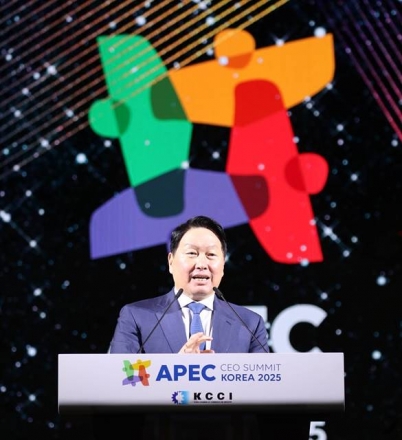


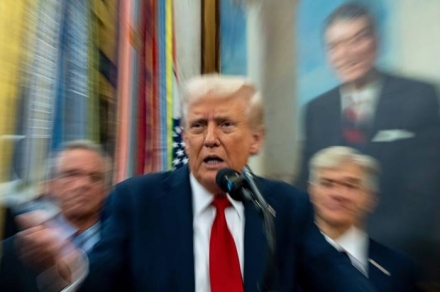




![[이상헌의 성공창업 경제학] 민생회복지원금 후광효과 지속하려면…](/data/news/202511/news_1762436220.1.jpg)


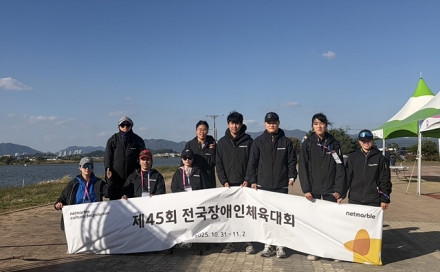
![[신박사의 신박한 컨설팅] 도시재생사업, 낡은 공간을 넘어 ‘삶의 플랫폼’으로](/data/news/202510/news_1761892797.1.png)
